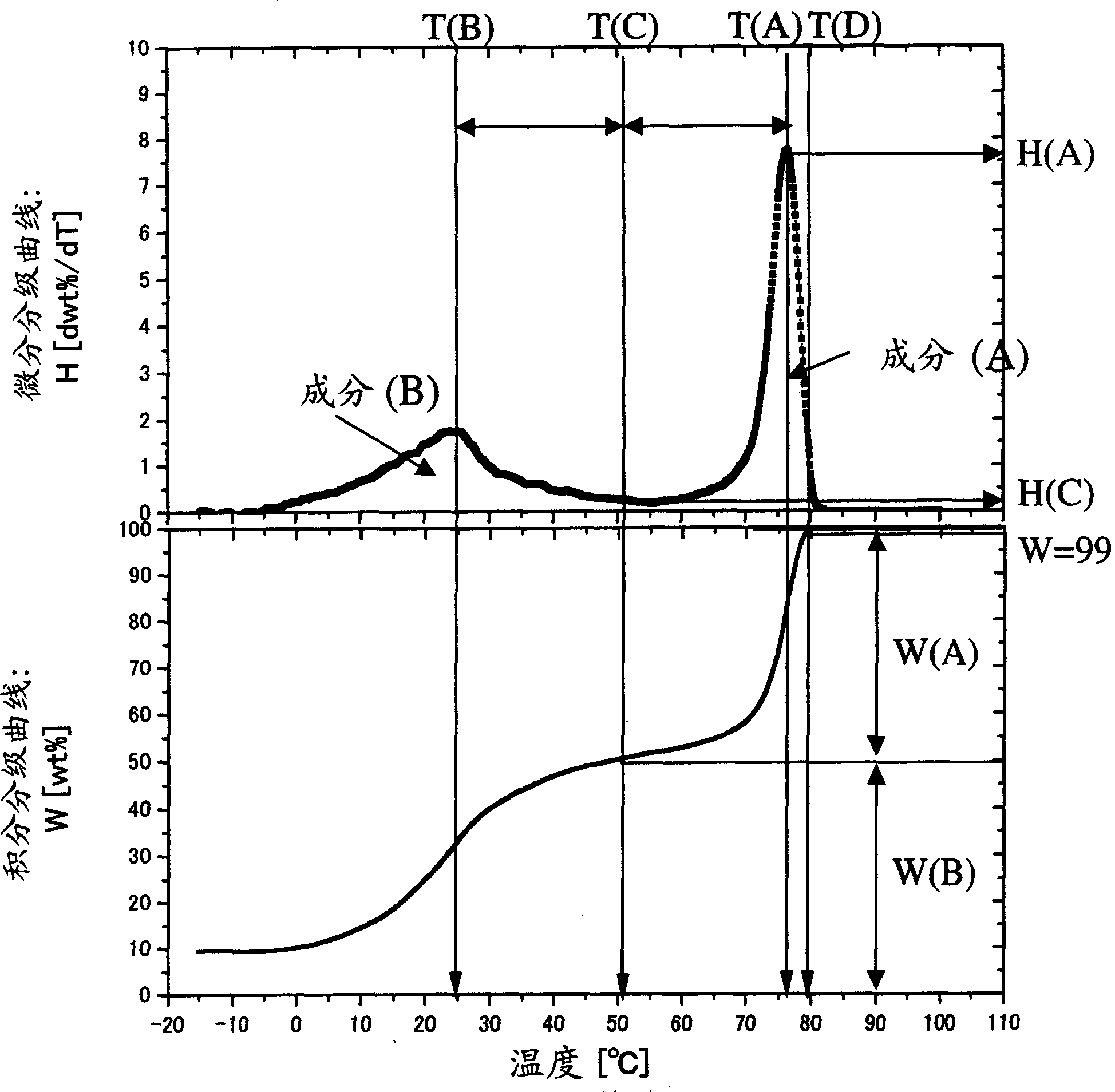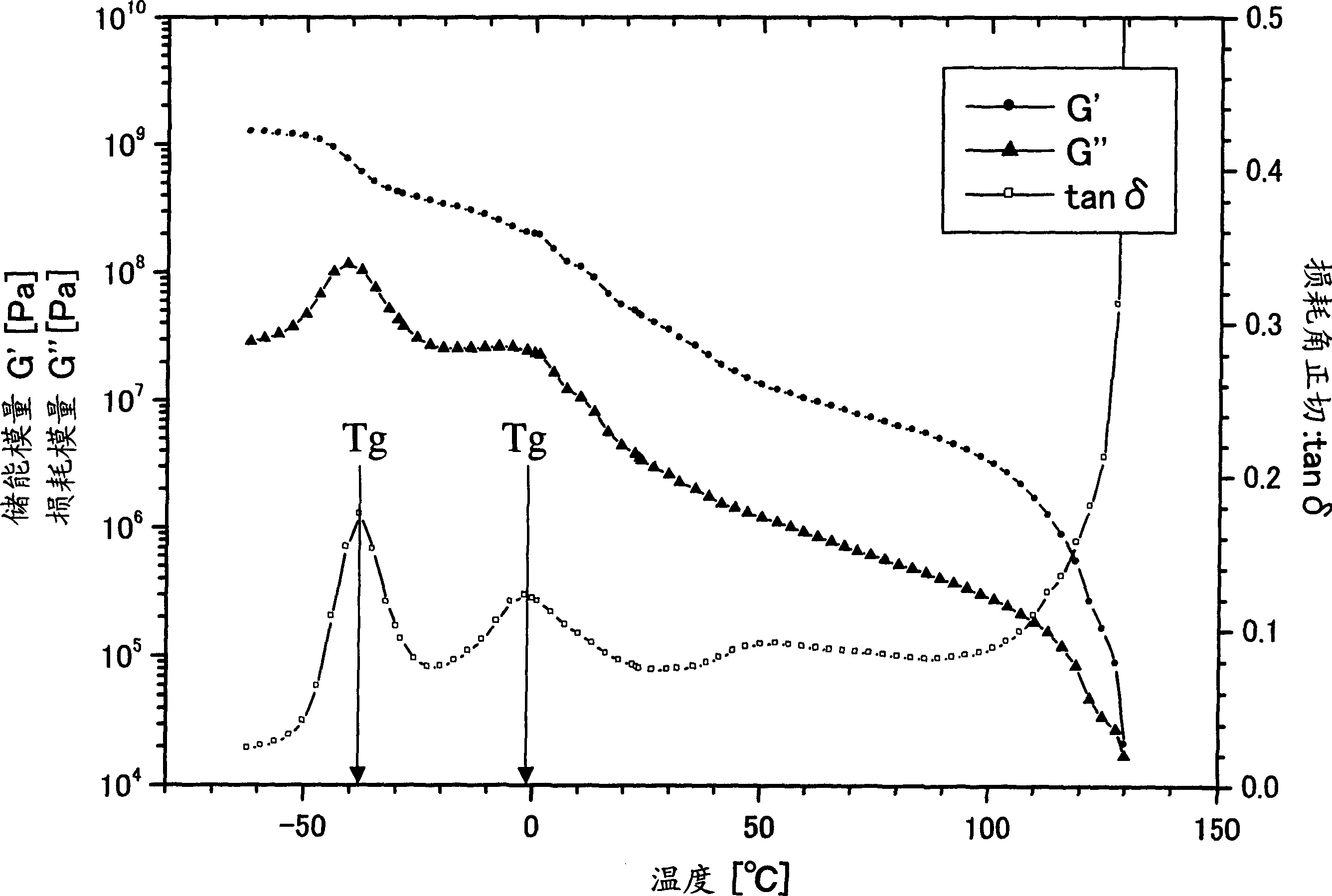Biaxially oriented multi-layer film using propylene-ethylene random block copolymer as a surface layer
A random copolymer, biaxially oriented technology, applied in the field of biaxially oriented multilayer films
- Summary
- Abstract
- Description
- Claims
- Application Information
AI Technical Summary
Problems solved by technology
Method used
Image
Examples
preparation example Construction
[0169] Preparation of a sample: A sample solution having a concentration of 1 mg / mL was prepared at 140° C. using o-dichlorobenzene (containing 0.5 mg / mL of BHT) as a solvent.
[0170] The amount of components with a molecular weight less than 5000 can be determined by plotting the elution amount against the molecular weight obtained by GPC testing.
[0171] (1-8) Intrinsic viscosity [η]cxs of cold xylene solubles
[0172] The cold xylene solubles (CXS) of the random block copolymer will affect the anti-blocking property when exuding. CXS is a component soluble in xylene at 23°C, so the intrinsic viscosity of CXS is tested.
[0173] Get CXS as follows. The block copolymer samples were dissolved in p-xylene at 130°C and then left at 23°C for 12 hours. The precipitated polymer was removed by filtration, and p-xylene was distilled off from the filtrate to obtain CXS. The intrinsic viscosity ([η]cxs) of the CXS thus obtained was measured at 135°C using decalin as a solvent and ...
Embodiment
[0284] The present invention is further illustrated according to the following examples and comparative examples, but the present invention should not be limited thereto.
[0285] Various physical properties of the block copolymers obtained in the following Examples and Comparative Examples were measured according to the following methods.
[0286] 1) Melt flow rate (MFR)
[0287] According to the method condition M of JIS K7210A, the melt flow rate was tested under the following conditions.
[0288] Test temperature: 230°C
[0289] Nominal load: 2.16kg
[0290] Die shape: diameter 2.095mm, length 8.00mm
[0291] 2) TREF
[0292] The TREF test method is specifically as described above.
[0293] equipment
[0294] (TREF part)
[0295] TREF column: stainless steel column with a diameter of 4.3mm and a length of 150mm
[0296] Column packing: 100μm glass beads with surface inert treatment
[0297] Heating system: aluminum heating block
[0298] Cooling system: Peltier E...
preparation example 1
[0367] Preparation of prepolymerized catalyst
[0368] (chemical treatment of silicates)
[0369] Add 3.75 liters of distilled water to a 10 liter glass separatory flask equipped with a stirrer, and then slowly add 2.5 kg of concentrated sulfuric acid (96%). Disperse 1 kg of montmorillonite (Benclay SL manufactured by Mizusawa Chemical Co., Ltd., average particle size = 25 μm, particle size distribution = 10-60 μm) therein at 50° C., heat the resulting suspension to 90° C., and maintain 6.5 μm at this temperature. Hour. After cooling to 50°C, the suspension was filtered under reduced pressure to recover the filter residue. The filter residue was dispersed with 7 liters of distilled water, followed by filtration. This elution procedure was repeated until the pH of the wash (filtrate) exceeded 3.5. The filter residue thus recovered was dried at 110° C. overnight in a nitrogen atmosphere. After drying, 707 g of silicate were obtained.
[0370] (drying of silicates)
[0371...
PUM
| Property | Measurement | Unit |
|---|---|---|
| Wavelength | aaaaa | aaaaa |
| Size | aaaaa | aaaaa |
| Size | aaaaa | aaaaa |
Abstract
Description
Claims
Application Information
 Login to View More
Login to View More - R&D
- Intellectual Property
- Life Sciences
- Materials
- Tech Scout
- Unparalleled Data Quality
- Higher Quality Content
- 60% Fewer Hallucinations
Browse by: Latest US Patents, China's latest patents, Technical Efficacy Thesaurus, Application Domain, Technology Topic, Popular Technical Reports.
© 2025 PatSnap. All rights reserved.Legal|Privacy policy|Modern Slavery Act Transparency Statement|Sitemap|About US| Contact US: help@patsnap.com



